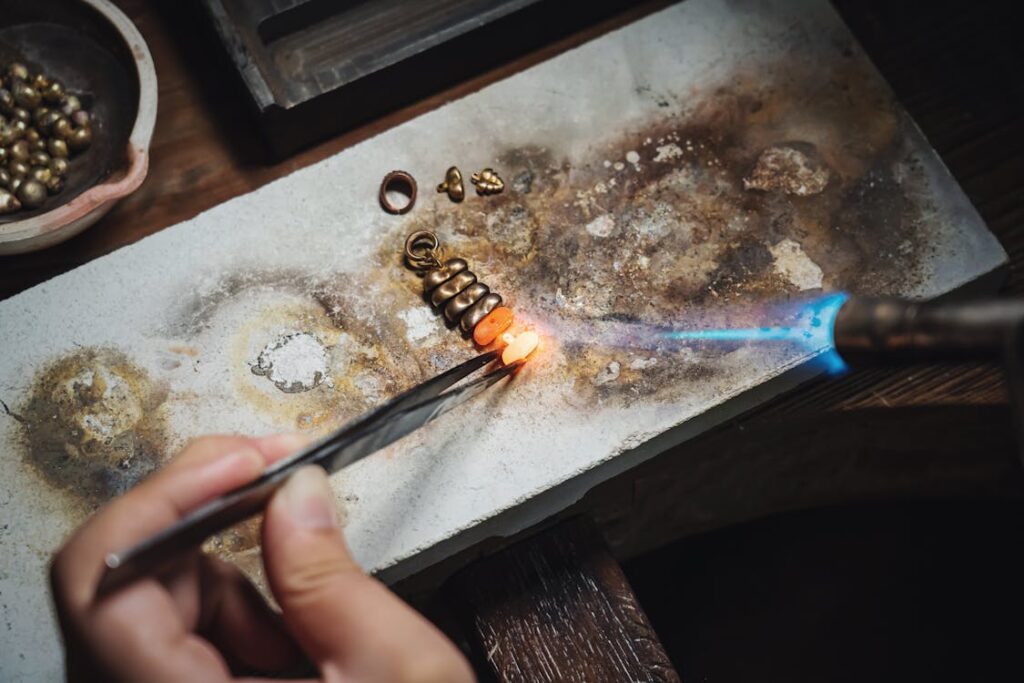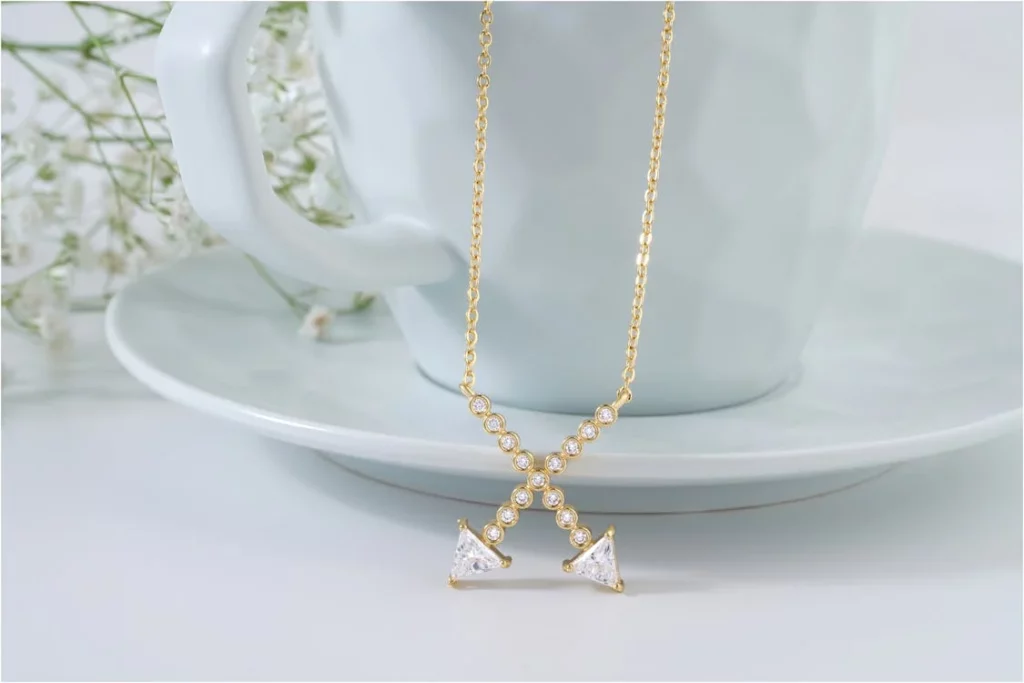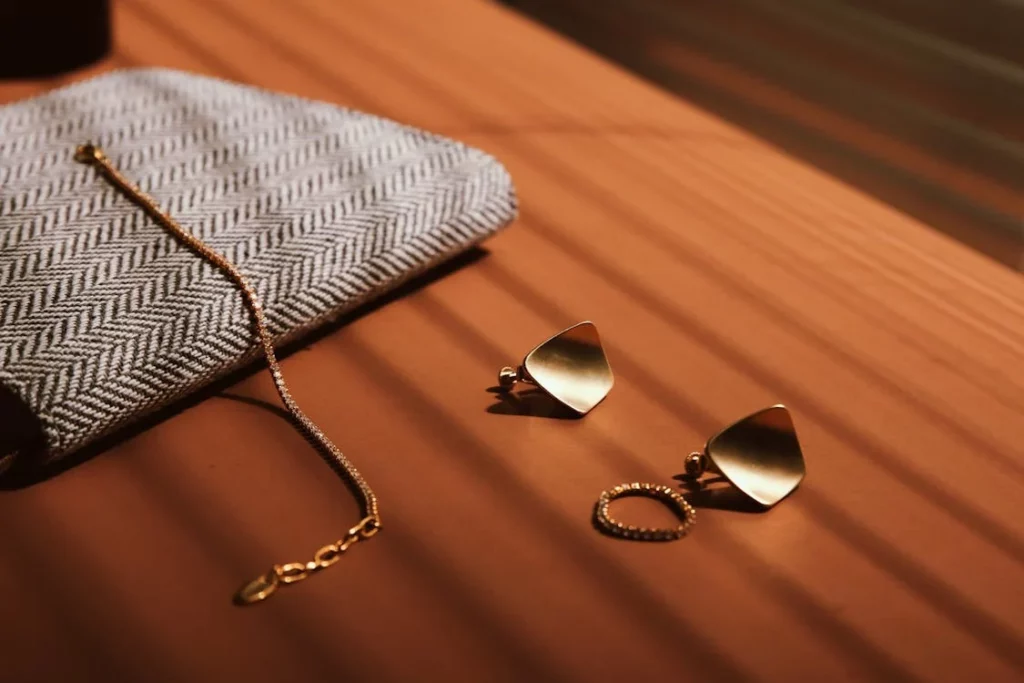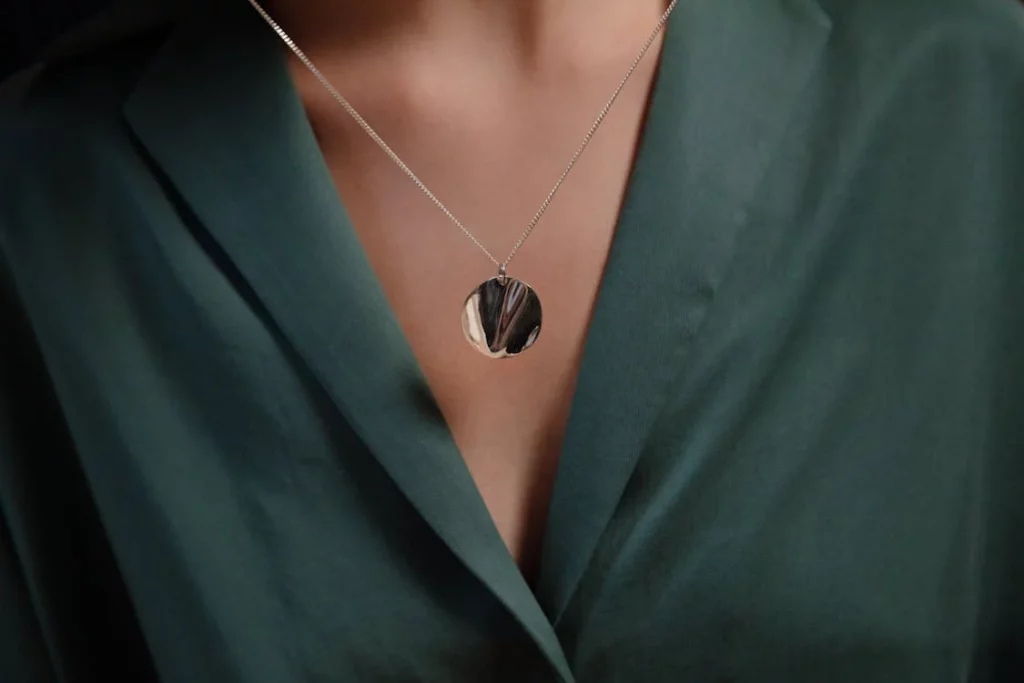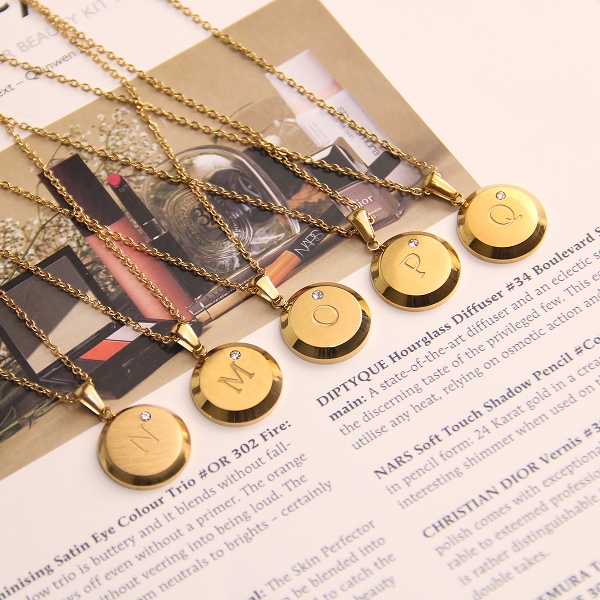
When it comes to jewelry materials, titanium and stainless steel have emerged as popular choices. Both metals offer unique properties and characteristics that make them highly valued in the industry. If you’re in the market for a new piece of jewelry, understanding the differences between titanium and stainless steel can help you make an informed decision.
In this article, we will explore the topic of titanium vs. Schmuck aus Edelstahl and provide insights into the various factors you should consider when choosing between them. Whether you’re looking for durability, hypoallergenic properties, aesthetics, or comfort, this article aims to shed light on the distinctive features of these metals. By the end, you’ll have a clearer understanding of the qualities each metal possesses, helping you make the right choice for your jewelry needs. Let’s dive in!
What is Stainless Steel Jewelry?
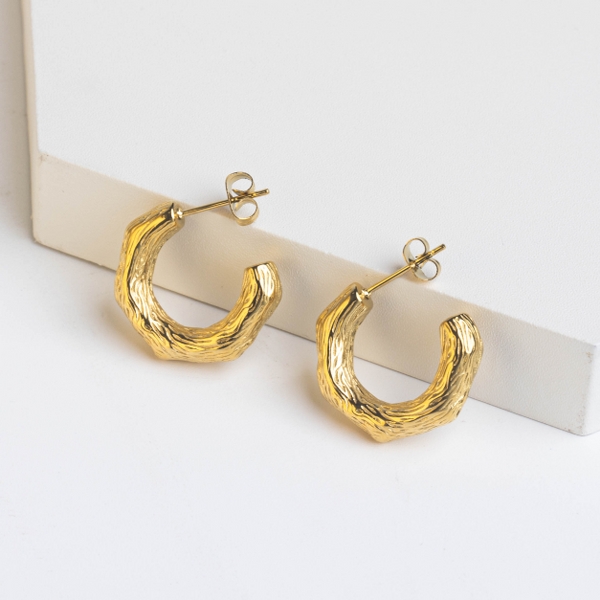
Stainless steel jewelry has gained considerable popularity in the world of fashion accessories. Let’s delve deeper into what stainless steel jewelry is, its composition, Eigenschaften, and why it has become a go-to choice for many individuals.
A. Overview of Stainless Steel Jewelry
Stainless steel jewelry is made from an alloy of steel mixed with other elements, primarily chromium. The addition of chromium enhances its corrosion resistance, giving it the “stainless” quality for which it is known. This type of jewelry is known for its Haltbarkeit, versatility, und Erschwinglichkeit, making it a favored option in the market.
B. Composition and Properties
The primary component of stainless steel jewelry is iron, which is combined with at least 10.5% Chrom. This composition creates a protective layer of chromium oxide on the surface of the material, giving stainless steel its resistance to corrosion, stains, and tarnish. It also possesses impressive strength and hardness, ensuring that jewelry crafted from stainless steel maintains its shape and withstands everyday wear and tear. Zusätzlich, stainless steel is known for its hypoallergenic properties, making it suitable for individuals with sensitive skin.
C. Popularity in the Jewelry Industry
Stainless steel jewelry, einschließlich necklaces and pendants, Ohrringe, Ringe, Und Armbänder, offers an excellent option for those seeking stylish and durable accessories. It offers an affordable alternative to precious metals without compromising on quality, making it accessible to a wide range of consumers. Der durability and resistance to corrosion and tarnish make stainless steel jewelry an attractive option for those seeking long-lasting accessories that require minimal maintenance. Furthermore, stainless steel’s classic silver-toned appearance adds a touch of elegance and versatility to any outfit, making it a versatile choice for both casual and formal occasions.
In summary, stainless steel jewelry is composed of an alloy primarily consisting of iron and chromium. It possesses excellent resistance to corrosion, stains, and tarnish, while offering durability and strength. Its affordability, hypoallergenic properties, and timeless appeal have contributed to its rise in popularity in the jewelry industry. When considering jewelry options, stainless steel provides a reliable and stylish choice.
What is Titanium Jewelry?
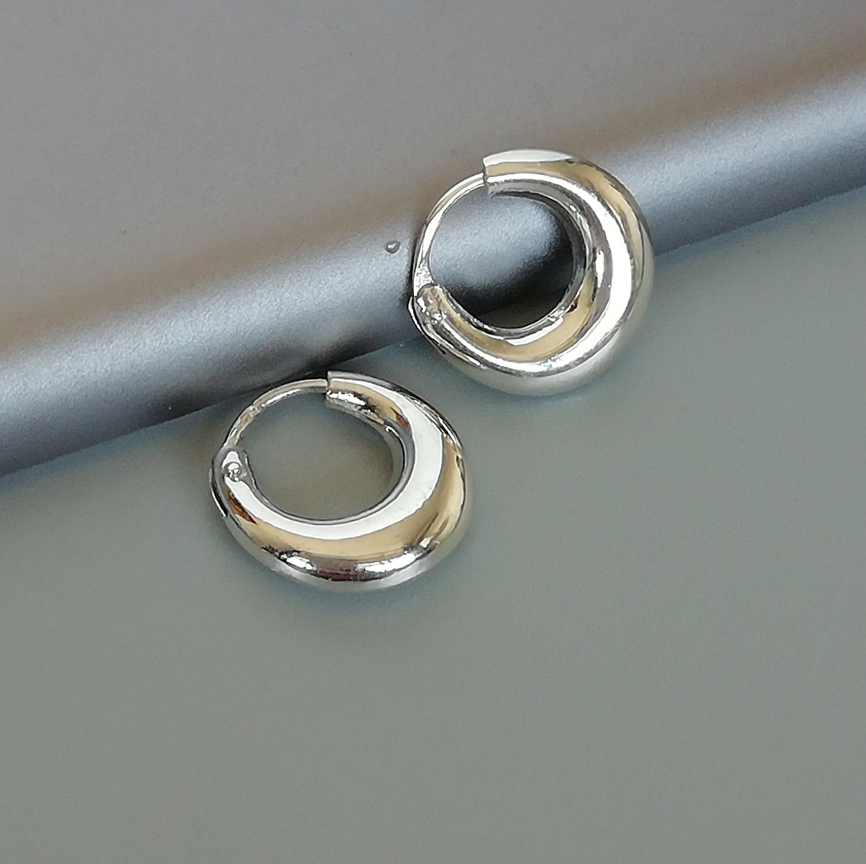
source: pinterest
Titanium jewelry has gained significant recognition in recent years, captivating the attention of jewelry enthusiasts worldwide. Let’s delve into what titanium jewelry is, its composition, Eigenschaften, and the unique features that set it apart from other metals.
A. Overview of Titanium Jewelry
Titanium jewelry is crafted from the metal known as titanium, an incredibly lightweight yet strong material. It is renowned for its exceptional durability, hypoallergenic properties, and contemporary appeal. Titanium has become increasingly popular in the jewelry industry due to its distinctive qualities and versatility.
B. Composition and Properties
Titanium is a chemical element with the atomic number 22, known for its low density and high strength. When used in jewelry, it is often combined with small amounts of other elements, wie zum Beispiel aluminum and vanadium, to enhance its properties. This combination results in a metal that is lightweight, yet incredibly strong, making it highly suitable for crafting intricate and long-lasting jewelry pieces. Zusätzlich, titanium is highly resistant to corrosion, trüben, und Kratzer, ensuring that your titanium jewelry remains unblemished for years to come.
C. Unique Characteristics of Titanium Jewelry
What sets titanium jewelry apart are its unique characteristics. First and foremost, titanium is exceptionally lightweight, almost half the weight of stainless steel, making it comfortable for everyday wear. This characteristic is particularly appealing to those seeking a jewelry piece that is lightweight and easy to handle. Secondly, titanium is renowned for its hypoallergen Eigenschaften, making it an optimal choice for individuals with sensitive skin or allergies. It is considered biocompatible, significantly reducing the likelihood of skin irritations or adverse reactions.
Darüber hinaus, titanium jewelry offers a sleek and modern aesthetic appeal. It can be finished with various techniques, such as brushed, polished, or satin finishes, allowing for a customized and contemporary look. Zusätzlich, titanium can be colored through advanced processes like physical vapor deposition (PVD), resulting in eye-catching shades such as black or rose gold.
In summary, titanium jewelry is made from the lightweight and strong metal known as titanium. Its composition and properties contribute to its exceptional durability, hypoallergenic nature, and contemporary aesthetic appeal. The combination of these unique characteristics makes titanium jewelry a popular choice for those seeking lightweight, dauerhaft, and stylish accessories that reflect their individuality.
Stainless Steel vs. Titanium Jewelry
| Criteria | Titanium Jewelry | Edelstahlschmuck |
| Durability and Strength | High strength-to-weight ratio, resistance to corrosion, trüben, und Kratzer. | Resistance to rust, tarnishing, und Kratzer. |
| Hypoallergene Eigenschaften | Biocompatible and hypoallergenic. Excellent for sensitive skin or metal allergies. | Im Allgemeinen hypoallergen, suitable for individuals with sensitive skin. |
| Aesthetics and Finishing | Various finishes available, including brushed, polished, and PVD coatings. Color options like black or rose gold. | Classic silver-toned appearance, matte and polished finishes. |
| Weight and Comfort | Extremely lightweight, providing comfort and ease of wear. | Relatively lightweight, striking a balance between weight and durability. |
| Bezahlbarkeit | Im Allgemeinen teurer als Edelstahl, but still more affordable than precious metals like gold or platinum. | Budget-friendly option compared to other metals like gold or platinum. |
In this chapter, we will explore the key differences between stainless steel and titanium jewelry. We will delve into their durability and strength, hypoallergenic properties, aesthetics and finishing options, weight and comfort, as well as affordability. By understanding these distinctions, you will be equipped with the knowledge to make an informed decision when choosing between stainless steel and titanium jewelry. Let’s dive in and examine the unique characteristics of each metal.
A. Durability and Strength
When it comes to durability and strength, both titanium and stainless steel jewelry have impressive qualities.
- Titanium Jewelry: Titanium is renowned for its exceptional strength-to-weight ratio. Despite being incredibly lightweight, titanium jewelry is incredibly durable and can withstand daily wear without easily showing signs of damage. Its inherent resistance to corrosion, trüben, and scratches make it ideal for those who lead active lifestyles or work with their hands. This means that your titanium jewelry will remain in excellent condition over time, maintaining its original appearance.
- Edelstahlschmuck: Similar to titanium, stainless steel jewelry is highly durable and resistant to rust, tarnishing, and scratching. The addition of chromium to stainless steel enhances its corrosion resistance, making it a reliable option for long-lasting jewelry. Whether exposed to harsh environmental conditions or regular wear, stainless steel jewelry retains its strength and durability over time, ensuring that it remains aesthetically pleasing and intact.
In summary, both titanium and stainless steel jewelry possess outstanding durability and strength. Titanium’s lightweight nature combined with its corrosion resistance and scratch-resistant properties make it an excellent choice for those seeking an enduring accessory. On the other hand, stainless steel’s addition of chromium enhances its rust and tarnish resistance, providing long-term durability.
B. Hypoallergene Eigenschaften
When it comes to hypoallergenic nature, stainless steel jewelry may not possess the same level of biocompatibility as titanium.
- Titanium Jewelry: One of the standout features of titanium jewelry is its hypoallergenic nature. Titanium is biocompatible, which means it is unlikely to cause allergic reactions or skin irritations. People with sensitive skin or metal allergies can confidently wear titanium jewelry without worrying about adverse effects. Its biocompatibility also makes it commonly used in medical implants and surgical instruments, further emphasizing its safety for prolonged contact with the skin.
- Edelstahlschmuck: While stainless steel is generally considered hypoallergenic, it may not possess the same level of biocompatibility as titanium. Jedoch, stainless steel is still well-tolerated by the majority of individuals, making it a suitable option for those with sensitive skin or metal allergies. Stainless steel jewelry is often crafted from surgical-grade stainless steel, which minimizes the risk of allergic reactions and ensures a comfortable wearing experience.
In summary, both titanium and stainless steel jewelry offer hypoallergenic properties, making them favorable choices for individuals with sensitive skin or metal allergies. Titanium’s biocompatibility and skin-friendly attributes provide an added layer of assurance against allergic reactions. While stainless steel may not possess the same degree of biocompatibility, it is still generally well-tolerated and can be crafted from surgical-grade stainless steel for increased hypoallergenic qualities.
C. Aesthetics and Finishing
For most of people, both titanium and stainless steel jewelry are a sleek and durable option for daily life.
- Titanium Jewelry: Titanium jewelry offers a wide range of aesthetic options to suit different tastes and styles. It can be finished with various techniques, including brushed, polished, and PVD (Physikalische Gasphasenabscheidung) finishes. A brushed finish creates a textured, non-reflective surface, while a polished finish gives a sleek, shiny look. PVD finishes involve coating the titanium with a thin layer of material, such as gold or black, to achieve different colors and enhance durability. Titanium jewelry is known for its modern and contemporary appeal, with options available in traditional silver tones as well as vibrant hues like black or rose gold.
- Edelstahlschmuck: Stainless steel jewelry boasts a classic silver-toned appearance, making it a timeless choice for many. The natural shine of stainless steel mimics that of sterling silver or white gold, providing an elegant and versatile aesthetic. Stainless steel jewelry can be finished in both matte and polished Stile, allowing for a range of looks. A matte finish presents a textured, non-reflective surface, while a polished finish showcases a high gloss and reflective appearance. This versatility makes stainless steel jewelry suitable for various fashion preferences and occasions.
In summary, titanium jewelry offers a range of aesthetic options with brushed, polished, and PVD finishes, as well as color variations like black or rose gold. Stainless steel jewelry is known for its classic silver-toned appearance and can be finished in matte or polished styles, catering to different style preferences. Whether you prefer a modern and vibrant look or a timeless and elegant design, both titanium and stainless steel jewelry offer options to suit your aesthetic preferences.
D. Weight and Comfort
Whether you prioritize extreme lightweight or a balance between weight and durability, both titanium and stainless steel jewelry offer options to meet your comfort needs.
- Titanium Jewelry: One of the key advantages of titanium jewelry is its lightweight nature. Titanium is renowned for its high strength-to-weight ratio, making it significantly lighter than many other metals used in jewelry. The lightweight quality of titanium ensures that wearing titanium jewelry is comfortable and effortless. Whether you’re wearing a titanium ring, necklace, or bracelet, you’ll hardly feel its presence on your skin. This makes titanium an excellent choice for individuals who prefer lightweight accessories or those with sensitivity to heavier jewelry.
- Edelstahlschmuck: While stainless steel is not as lightweight as titanium, it still offers relative comfort and ease of wear. Compared to other metals like gold or platinum, stainless steel is relatively lightweight. This makes it a comfortable option, particularly for individuals who prefer more substantial jewelry but still want something that feels comfortable on their skin. Stainless steel jewelry strikes a balance between weight and durability, allowing for a comfortable wearing experience throughout the day.
In summary, titanium jewelry is prized for its lightweight nature, which ensures comfort and ease of wear. Its high strength-to-weight ratio means that titanium jewelry feels nearly weightless on your skin, making it a preferred choice for those seeking ultra-light accessories. Stainless steel jewelry, though not as lightweight as titanium, still provides relative comfort and is suitable for individuals who prefer a slightly heavier but still comfortable piece.
E. Bezahlbarkeit
When considering the cost of jewelry, both stainless steel and titanium offer budget-friendly options compared to precious metals like gold or platinum. Jedoch, there are some differences in terms of affordability between the two metals.
- Titanium Jewelry: Although slightly pricier than stainless steel, titanium jewelry still offers excellent value for its unique properties. The cost of titanium jewelry can vary depending on factors such as Handwerkskunst, design complexity, and any additional enhancements like PVD coatings or gemstone accents. Jedoch, titanium jewelry remains more affordable than precious metals like gold or platinum, providing a balance of durability and affordability.
- Edelstahlschmuck: Stainless steel jewelry is known for its affordability. It is generally more budget-friendly compared to titanium, sterling silver jewerly and other precious metals. Stainless steel is widely available and cost-effective to produce, making it a popular choice for those looking for stylish yet affordable jewelry options. Whether you’re shopping for rings, Halsketten, Armbänder, or earrings, stainless steel jewelry offers an accessible price point without compromising on durability or aesthetics.
In summary, stainless steel jewelry is known for its affordability, offering budget-friendly options for those seeking stylish accessories without breaking the bank. Titanium jewelry, while slightly pricier, still provides excellent value for its durability and distinctive properties compared to precious metals. Ultimately, your budget and personal preferences will play a role in deciding between stainless steel and titanium jewelry, both of which offer accessible price points.
Abschluss
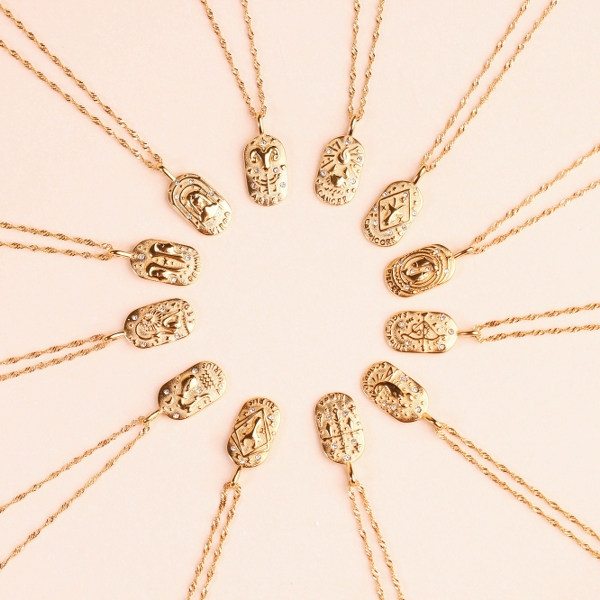
In conclusion, we have explored the key differences between stainless steel and titanium jewelry. When choosing between titanium and stainless steel jewelry, it is crucial to consider your personal preferences, style, and budget. Assessing factors such as durability, hypoallergenic properties, aesthetics, comfort, and affordability will help you make an informed decision that aligns with your needs and preferences.
By understanding the differences highlighted in this article, you can confidently choose between titanium and stainless steel jewelry that suits your style, Budget, and ensures a comfortable and durable accessory. Remember to prioritize your own preferences and ultimately select the option that aligns best with your personal style and requirements. Happy jewelry shopping!
FAQS
- Is stainless steel good quality jewelry?
Ja, stainless steel is considered good quality jewelry. It is known for its durability, resistance to rust and tarnishing, und Erschwinglichkeit. Stainless steel jewelry is often made from surgical-grade stainless steel, which ensures its longevity and hypoallergenic properties.
- Wie lange hält Edelstahlschmuck??
Stainless steel jewelry is designed to last a long time. With proper care and maintenance, stainless steel jewelry can retain its original appearance and quality for many years. It is resistant to rust, tarnishing, und Kratzer, which contributes to its durability and long lifespan.
- Is titanium or stainless steel better for piercings?
Both titanium and stainless steel are commonly used for piercings due to their hypoallergenic properties and durability. Jedoch, titanium is often preferred for initial piercings or in cases of sensitivity or allergies as it is more biocompatible. Titanium is also a lighter metal, which can be more comfortable for piercings. Ultimately, the choice between titanium and stainless steel for piercings may depend on personal preference and the advice of a professional piercer.
- Titanium vs stainless steel rings, which is better?
The choice between titanium and stainless steel for rings depends on various factors. Titanium rings offer exceptional strength-to-weight ratio, are lightweight, and have excellent durability. Stainless steel rings, on the other hand, have a classic silver-toned appearance, are relatively lightweight, and are more budget-friendly. Both materials are highly resistant to corrosion and scratches. The decision ultimately depends on personal preferences such as style, comfort, and budget.


